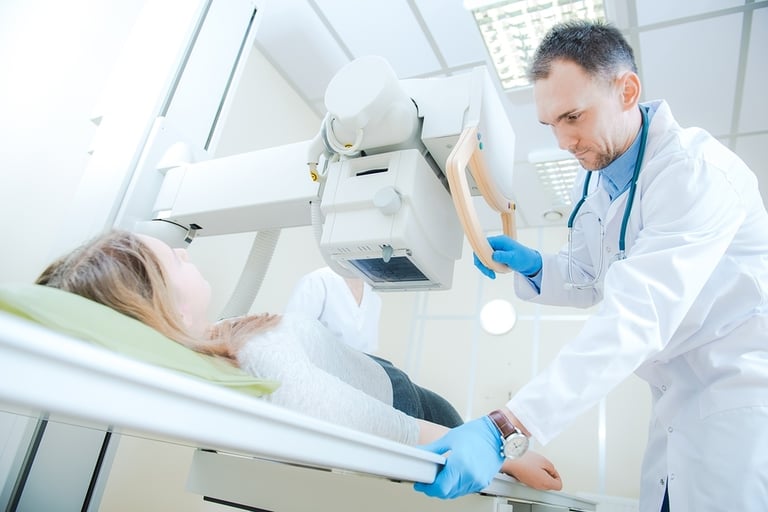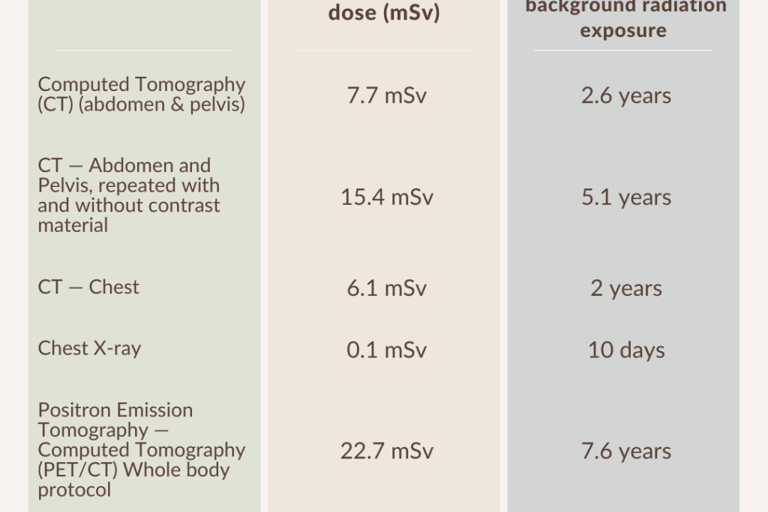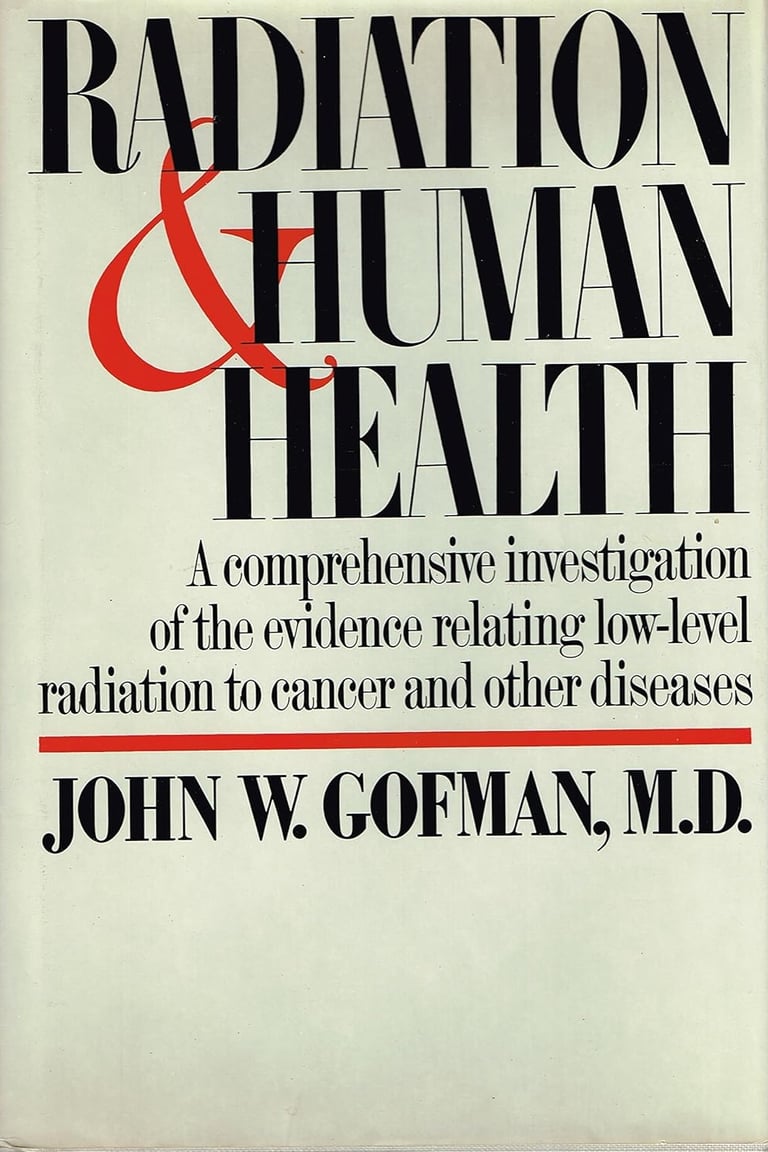WARNING: This website contains facts and opinions some may find offensive...
IONIZING RADIATION FROM MEDICAL IMAGING




Between 1951 and 1962, more than 100 nuclear bombs were detonated in the open air, saturating the nation with radioactive fallout. The most insidious byproduct? Iodine-131, a silent killer that infiltrated milk, crops, and children’s thyroids from coast to coast. Decades later, the National Cancer Institute confirmed what whistleblowers had long suspected: every person in the contiguous U.S. was exposed. But this wasn’t an accident—it was a calculated betrayal. And if the government was willing to poison its own people then, what deadly experiments are they running on us now?
The U.S. government conducted over 100 above-ground nuclear tests, releasing radioactive iodine-131 (I-131) into the atmosphere.
Winds carried fallout nationwide, contaminating food supplies, particularly milk consumed by children.
I-131 targets the thyroid, increasing risks of cancer and autoimmune disorders—yet the public was never warned.
High-exposure states included Utah, Idaho, Montana, and the Midwest, but no region was spared.
Compensation programs arrived decades too late, leaving thousands of victims without justice.
The same government that lied about fallout is likely concealing modern-day toxic exposures through geoengineering programs, agrochemicals, vaccine experiments, psychiatric drugs, and food chemicals.
If history teaches anything, it’s that governments never stop experimenting on their citizens. From suppressing toxic water in Flint to forcing harmful medical mandates, the playbook remains the same: deceive, dismiss, and delay accountability. The same institutions that lied about nuclear fallout and fluoride now push untested vaccine experiments, psychiatric drugs, chemical-laden foods, and environmental pollutants like atrazine, neonicotinoids, and glyphosate—all while silencing dissent.
HOW COME DOCTORS DON'T SAY MORE ABOUT RADIATION DANGERS?
Because they are among the primary users of nuclear radiation, using it for all kinds of dangerous tests. A single CT scan of the chest is equal to about 350 standard chest X-rays. They are using radiation, a cause of cancer, to try to treat cancer, and that usually does not turn out too well. Because they are not honest with themselves they cannot be honest with their patients, who should be told that many of the tests they are being given by doctors expose them to more dangerous radiation.
Like global warming, vaccines and now Islamic terrorism and immigration, there is no real discussion, no real science being sported in the news so the public is left completely in the dark about radiation exposures. The people with the real power in this world insist that we will always see and define the situation as safe, no need to worry or do anything like drink lots of iodine, sodium bicarbonate, magnesium and start off each day drinking a glass of ultra-pure edible clay. Edible clay is one of the most basic detoxification substances. It helps make sure absorbed radioactive particles pass through instead of into us.
When was the last time you remember your doctor telling you to take magnesium or any of these other substances, or even sulfur to reduce the risk that our exposure to increasing levels of radiation do not lead to cancer..? The person who probably knows as much about the effects of radiation as anyone in the world is John Gofman, M.D., Ph.D., Professor Emeritus of Molecular and Cell Biology at the University of California at Berkeley, and on the faculty of the University of California Medical School in San Francisco (UCSF).
A CT scan typically exposes a patient to 2 to 3 rads, compared to 0.015 rads for a conventional chest x-ray—that's over 100 times more radiation. A fluoroscope typically delivers 5 rads per minute—that's over 300 times more radiation than a standard x-ray. Radiographers also need to compensate for the age and size of patients. And specialists need to be aware of how much previous exposure their patients have had, and be judicious in ordering only necessary imaging.
There is a revolution going on in medicine right now. It is the growth of what we call alternative medicine—a movement typified by the absolute minimization of toxic medical modalities. This is being driven not by the efforts of healthcare professionals but by the market demands of patients, who are becoming better informed and no longer blindly accepting unnecessary and unacceptable "risk-benefit" ratios…
It is difficult to get a man to understand something when his salary depends on his not understanding it. The officials who green-lit nuclear tests didn’t drink the milk. The bureaucrats pushing today’s poisons won’t suffer the consequences. They have been assaulting us for decade after decade with their slash, burn, and poison, offered as 100% safe and effective "medical care."
Exposure to ionizing radiation is increasing rapidly in the United States. Medical imaging is the main source of artificial radiation exposure. Evidence, however, suggests that patients are poorly informed about radiation exposure when attending diagnostic scans. In fact, Americans today are exposed to seven times more radiation from diagnostic medical imaging tests than they were 30 years ago, due to a dramatic increase in the use of X-rays, mammograms, and CT and PET scans as diagnostic tools.
No doubt, CT scans have revolutionized Western medicine, but they are not without risk. If we continue down the current path, CT-induced cancers could soon rival other major, preventable causes of cancer. Most of the increased exposure in the United States is due to CT scanning and nuclear imaging, which require larger radiation doses than traditional x-rays. A chest x-ray, for example, delivers 0.1 mSv, while a chest CT delivers 7 mSv — 70 times as much. And that's not counting the very common follow-up CT scans. Exposure to CT scans can increase the risk of cancer by at least 24%, with such risk lasting even years after the testing. For patients who had multiple CT scans, the increase in risk is higher.
A new study just published in JAMA Internal Medicine has uncovered a staggering reality about CT scans that the medical establishment has been downplaying for years: the radiation from a single year’s worth of these common diagnostic tests could trigger over 100,000 future cancer cases. While medical professionals often dismiss radiation concerns with vague reassurances, this groundbreaking research provides shocking numbers that should make every patient think twice before agreeing to that “routine” scan.
The numbers are far worse than previously thought. In 2023 alone, Americans underwent more than 93 million CT scans – that’s 62 million patients being exposed to powerful ionizing radiation. Using state-of-the-art modeling, researchers from the University of California, San Francisco, now project that approximately 103,000 future cancer cases will develop over these patients’ lifetimes as a direct result.
Dr. Rebecca Smith-Bindman, who led this study across 143 U.S. hospitals and outpatient facilities in 20 states, found that the cancer burden from CT scans is now three to four times higher than previous estimates from 2009. The study analyzed detailed radiation dose data from more than 120,000 actual CT examinations, making it the most comprehensive analysis ever conducted.
The findings are particularly disturbing when broken down by cancer type and patient demographics:
Lung cancer tops the list with 22,400 projected cases (21,400 in adults, 990 in children)
Colon cancer follows with 8,700 cases
Leukemia represents 7,900 cases
Bladder cancer accounts for 7,100 cases
Breast cancer in women contributes 5,700 cases
The risk is especially pronounced for children, with girls under one year of age developing cancer at a shocking rate of 20 per 1,000 CT scans – a risk magnitude that should give every parent serious pause.
What many patients don’t realize is that “one CT scan” often isn’t just one exposure. Nearly 30% of scans are now “multiphase” procedures that deliver multiple rounds of radiation during a single exam, dramatically increasing cancer risk.
The UCSF researchers identified abdomen and pelvis CT scans as the greatest contributors to projected cancers, responsible for 37,500 cases (37% of all projected cancers) despite representing only 32% of all CT scans. These procedures often use multiple scan phases, resulting in substantially higher radiation doses.
Equally concerning is the 30% increase in CT usage since 2007, a growth the researchers attribute partly to the alarming rise in “low-value, potentially unnecessary imaging” – scans that provide little or no medical benefit but still deliver cancer-causing radiation.
While the per-scan cancer risk is highest in children, particularly infants, the vast majority of projected cancers (93,000 cases or 91%) will occur in adults simply because they receive more scans. The study revealed striking sex differences as well. Women face significantly higher radiation-induced cancer risks than men, especially for lung and thyroid cancers. Even when researchers adjusted their models to be more conservative, lung cancer remained the most common radiation-induced cancer in women.
If current practices continue, the researchers warn that CT-associated cancers could eventually account for 5% of all new cancer diagnoses annually – putting CT scans on par with other major cancer risk factors like alcohol consumption (5.4%) and excess body weight (7.6%).
We cannot afford to ignore this warning. As patients, we must advocate for thoughtful care. As clinicians, we must uphold the highest standards of safety. And as a society, we must embrace healthier lifestyles – not just to live better, but to reduce our dependence on tools that, when overused, can do more harm than good.
Don't ask for a CT scan just because you want to feel assured that you've had a "thorough checkup." CT scans rarely produce important findings in people without relevant symptoms. And there's a chance the scan will find something incidental, spurring additional CT scans or x-rays that add to your radiation exposure. If you need a CT or nuclear scan to treat or diagnose a medical condition, the benefits usually outweigh the risks.
The effects of radiation damage typically take many years to appear, and the increase in high-dose imaging has occurred only since 1980. If your clinician recommends a CT or nuclear medicine scan, ask if another technique would work, such as a lower-dose x-ray or a test that uses no radiation, such as ultrasound (which uses high-frequency sound waves) or MRI (which relies on magnetic energy). Neither ultrasound nor MRI appears to harm DNA or increase cancer risk.
Studies show that ionizing radiation, such as gamma rays, X-rays, and radioactive particles can cause cancer by damaging DNA. If not properly repaired, this damage causes harmful changes in the DNA, subsequently leading to mutations.
The problem with radiation is that it interacts with living tissues causing damage to chromosomes (DNA), and proteins and lipids. Medical imaging is responsible for about 50% of the total radiation exposure to a typical US resident.
Here are examples of how much exposure one receives with some common X-rays tests:
Radiation dose from 1 chest X-ray equals a 10-day exposure to natural radiation.
Each cigarette smoked exposes the smoker to the radiation of 1 chest X-ray.
Radiation from 1 chest CT-scan is like 100 chest X-rays!
Radiation dose from 1 mammogram equals a 3- month exposure to natural radiation.
Radiation dose from 1 DEXA scan equals less than a 1-day exposure to natural radiation.
Mammograms expose the body to radiation 10- 100x higher than chest X-rays. Since Mammograms have been introduced into screening the number of ductal carcinoma in-situ has increased by 328%.
Mammograms have been nicknamed “scam-o-grams” by the natural health community for decades for several good reasons. They cause serious health issues, including breast cancer. The breasts are smashed down by a machine, causing severe inflammation. Then they are prodded and poked. The woman undergoes extreme stress, and the readings are often misinterpreted due to “gray spots” that could be almost anything other than a cancer tumor. Then there’s the radiation factor. Now the Cancer Industrial Complex (CIC) wants to start using AI, artificial intelligence, to make these life-threatening decisions, further complicating the entire process of scam-o-grams, which often end in unnecessary surgery, medical errors, and misdiagnosis, including double mastectomy.
As an aside, the radiation one is exposed to on a 7-hour flight from New York to Europe is equal to 1 chest X-ray. Doctors today are just beginning to take into account prior radiation exposure when considering the necessity of ordering an additional radiological test.
While these routine imaging procedures in conventional medicine are sometimes necessary, they do come with health risks due to the radiation they emit. In fact, researchers at the National Cancer Institute estimate that 29,000 future cancer cases could be attributed to the 72 million CT scans performed in the country. Furthermore, other imaging tests that don’t emit radiation, like MRIs (magnetic resonance imaging) also come with risks. For example, most doctors order the contrast dye gadolinium when ordering an MRI. Gadolinium has been shown to have toxic residual effects, especially among those with poor kidney function.
So, if you’re about to get a scan or some other type of imaging test, here are a few things you may want to consider helping your body detox from radiation exposure and heavy-metal laden contrasts:
HIGH-POTENCY SUPPLEMENTS CONTAINING POLYPHENOLS
Resveratrol, quercetin, and green tea polyphenols rank among the best-studied and most potent radioprotectants. In fact, studies have shown that plant polyphenols can protect human cells against radiation-induced DNA damage.
HIGH DOSE MELATONIN
Aim for 60 mg of melatonin the night before and the night after a scan. While many cancer patients actively take melatonin as part of their supplement protocol, melatonin has also been shown to have beneficial properties for the reduction of radiation toxicity in healthy tissue due its potent antioxidative properties.
CONSUME DETOX FOODS
Some of my favorite detox foods include spirulina, chlorella, kelp, broccoli, garlic, onions, wheat grass, lemon balm, parsley, avocados, kale, coconut oil, and pectin-rich foods like apples. These foods have been shown to protect against radiation-induced damage to cells and tissues primarily due to their high antioxidant and anti-inflammatory properties. Spirulina, chlorella, and pectin in particular act as natural binders, which bind to toxins and radioactive elements, drawing them.
OXICELL CREAM
Oxicell cream is a glutathione cream. Glutathione, also known as the “master antioxidant,” protects the body from toxic metals, pollutants, and perhaps most importantly when it comes to scans – oxidative stress. Radiation can cause the production of free radicals, which lead to oxidative stress, which can further cause DNA damage and mitochondrial dysfunction.
Using Oxicell in targeted areas before and after a scan can help to protect the body from oxidative stress by supporting the scavenging of free radicals that the scan may produce. Consider putting ¼ tsp of cream into your hands, and rub over your liver, your thyroid, and your adrenals, up to three times the day of your scan.
TAKE A RADIATION-NEUTRALIZING BATH FOLLOWING YOUR SCAN
Dissolve one to two pounds of salt with one to two pounds of baking soda in a hot bath, and soak for 40 minutes. Radiation is acidifying to the body, while a salt and baking soda soak is highly alkaline, which helps to neutralize radiation’s effect. Another thing to consider adding is bentonite clay. Clays are known for their ability to remove toxic metals because of their unusual structure of pores, which allow the clay to absorb large amounts of toxins. A magnetic clay bath is a great way to assist the body in a heavy metal detox and to remove radiation from the body.
HOMEOPATHY
Homeopathy means “similar pathology,” and its science is based on a principle known as the “Law of Similars.” This principle supports the proposition that any substance that can cause symptoms when consumed by a healthy individual can also combat the same symptoms in a person who is ill. Consider homeopathic remedies like X-Ray 30c, Cobaltum 30, Calc fluor 12 and Nat mur 6 to help your body detox from radiation. For example, taking one dose (3 pellets) of X-ray 30c the night before, morning of, and for three days after your scan may help mitigate the radiation effects.
HEALTHY DIET
The best anti-radiation diet is one that is rich in ORAC (oxygen radical absorbance capacity) foods, which have been shown to help heal the body from radiation damage, and chelating foods (foods that remove toxins from the body). Among my favorite high ORAC foods are blueberries, walnuts, cruciferous vegetables, and cilantro. Some favorite chelating foods include parsley, cilantro, Brazil nuts, garlic and onions.
SWEATING
Sweating helps the body eliminate heavy metal toxins (e.g. mercury and cadmium), and also reduces inflammation. In addition to exercise, a great way to help the body eliminate toxins is by sweating inside an infrared sauna. If you don’t have access to one, We highly recommend Relax Sauna. It’s a powerful, portable, and budget-friendly sauna.
CASTOR OIL PACKS
Castor oil is a non-volatile fatty oil that is derived from the seeds of the castor bean. Studies have shown that castor oil possesses detoxifying, anti-inflammatory, antioxidant, antimicrobial, and wound-healing properties. A favorite way to use castor oil is via castor oil packs. Castor oil packs applied to the liver area have also been shown to support and improve liver function. Castor oil packs have also been shown to:
Increase lymphatic drainage
Detoxify the body
Improve digestion
Reduce pain & inflammation
Increase glutathione
Promote regularity & boost gut integrity
HYDRATE
The simple act of drinking water is one of the most important pathways to detoxification. Aim to drink filtered water at least half your weight in ounces per day. If you’re looking for a high-quality filtration system.
These are just a few powerful protocols to follow that can help you detox, rebalance, and protect your body after radiation exposure from imaging tests.
Contact Us!
TuberoseHealing@protonmail.com
(727) 233-2978
Subscribe to our website.



